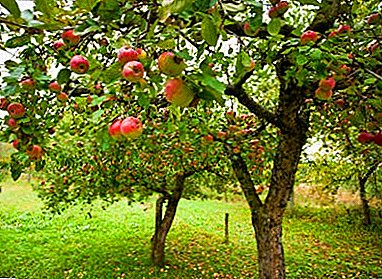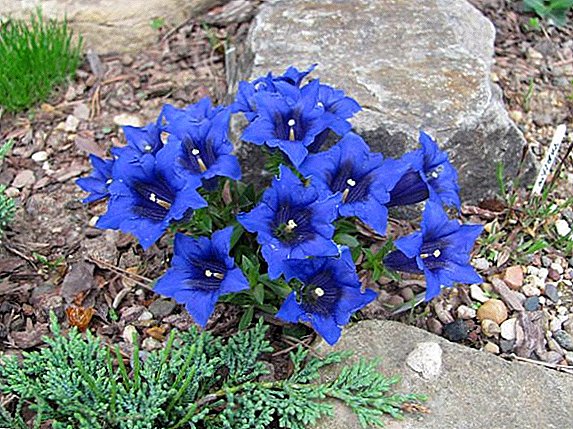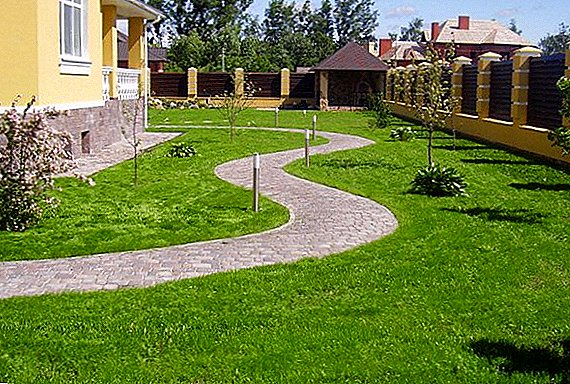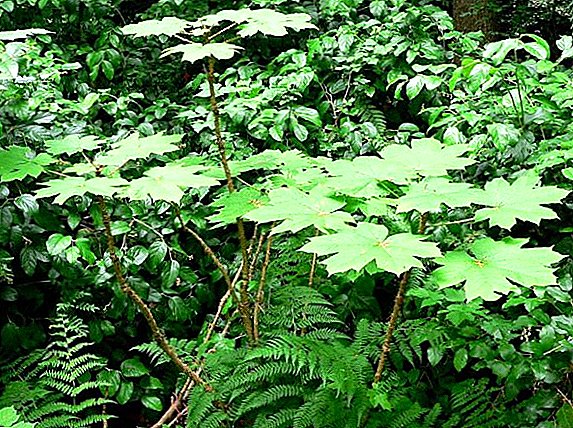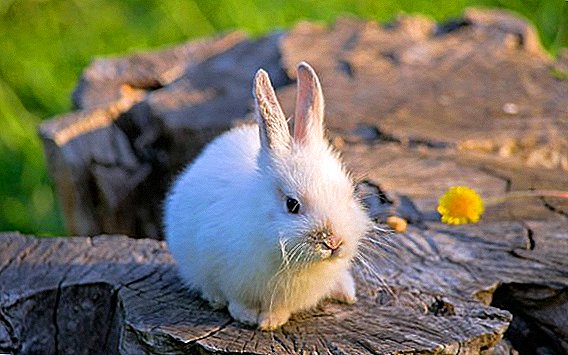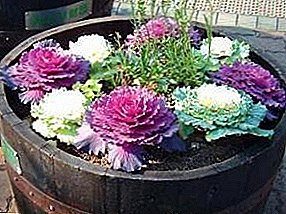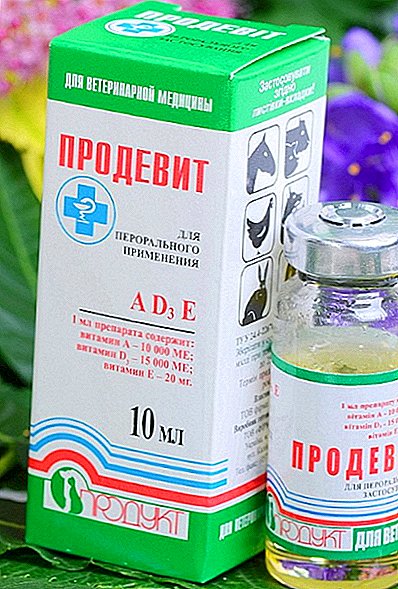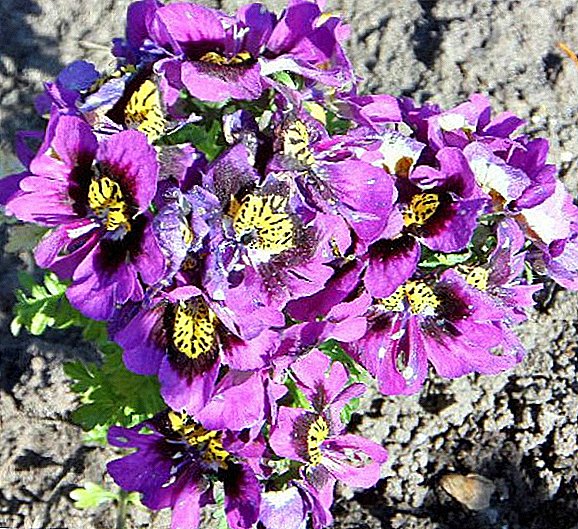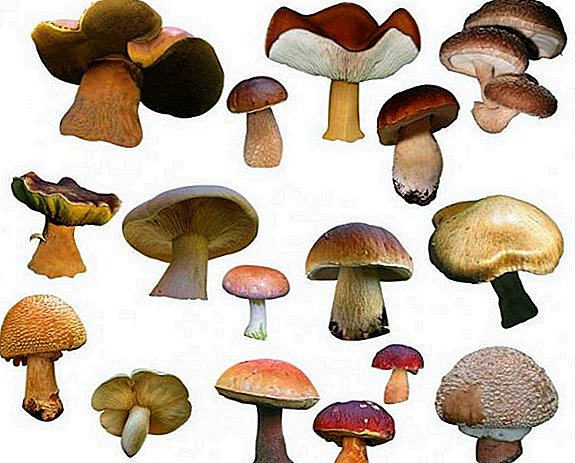 Going to the forest for mushrooms is a great opportunity to combine business with pleasure: breathing fresh forest air, stretching limbs, relaxing in natural silence, and collecting baskets of delicacies. And so that your pastime in nature was as safe as possible and there were no unpleasant consequences in the form of poisoning, you should familiarize yourself with the varieties of mushrooms that can be found in Primorsky Krai before the trip.
Going to the forest for mushrooms is a great opportunity to combine business with pleasure: breathing fresh forest air, stretching limbs, relaxing in natural silence, and collecting baskets of delicacies. And so that your pastime in nature was as safe as possible and there were no unpleasant consequences in the form of poisoning, you should familiarize yourself with the varieties of mushrooms that can be found in Primorsky Krai before the trip.
Edible and conditionally edible mushrooms
What edible mushrooms are, even a child knows. These are the specimens that can be safely eaten, and it is for them that novice mushroom pickers go.
Conditionally edible mushrooms are those that can also be used in cooking, but before you cook them, you must be familiar with the rules of their preparation. Often these mushrooms contain some amount of poison that can be removed by heat treatment. 
Important! Conditionally edible mushrooms are undesirable to feed children, because their digestive system is more sensitive. The intestines of a child can aggressively react even to the minimum amount of poison that has not been removed after cooking, which can cause poisoning.
Only then can they be eaten. Eating raw conditionally edible mushrooms is strictly prohibited.
Below we consider which mushrooms belong to the group of edible and conditionally edible, by what external signs they can be recognized, where to find the variety you need and what method of processing can be used to prepare each of them.
Did you know? On the tree tree can climb to a height of more than 5 meters.
White mushroom

- Alternative title. The cep is also called a boletus, a cow, or a grandmother.
- Appearance. The foot of the white mushroom reaches 8-12 cm in length and about 4 cm in thickness. Its color is usually pale brown. At the base of the legs you can see a pronounced mesh. Color pulp legs - white. The diameter of the cap of the fungus varies from 10 to 20 cm, it is convex in shape, resembles a pad. The color of the cap may be chestnut brown or walnut brown. The color of the pulp is the same as that of the leg, white. What is important, the color of the pulp is the same before drying and after it.
- Where is growing. To find white fungus, go to the birch or oak forest. You can also meet a mushroom under the oaks, if you go into the bush, or under a birch tree, if you are in a mixed forest.
- When to collect. The best time to collect is the end of summer, August.
- Use in cooking. It has a pronounced, rich taste. This kind of mushrooms can be dried, pickled, they are also suitable for fresh dishes - this includes frying, stewing, baking and other heat treatments.
We recommend to get acquainted with the types and beneficial properties of porcini mushrooms, as well as learn how to prepare porcini mushrooms for the winter.

White slimy shrub
- Appearance. The leg of a monkey in length reaches 5 cm, its thickness is from 5 to 7 mm. A characteristic feature is the presence of a ring on the base of the mushroom, closer to the cap. The cap itself in diameter reaches from 2 to 10 cm, has a slightly convex, hemispherical shape. She is also characterized by the presence of plates - rare and wide, up to 10 mm in width. Color that legs, that caps - white. In the center of the cap the transition to a light brown shade is possible.
- Where is growing. You can meet the honey bud on the dead and dead tree trunks, which include the small leaf maple, hornbeam, elm, as well as on the branches of the trees.
- When to collect. Abundantly growing from late spring to early fall. In smaller quantities found in early spring.
- Use in cooking. Cooking white slimy ashy, as an independent dish, you can, because the mushroom refers to edible. However, it is best served as an additive in the preparation of other edible mushrooms, since it itself has a mild flavor.

Whitefish
- Alternative title. The white-haired woman is also called white-hair.
- Appearance. Leg small, about 2 cm in length, but thick - about 1 cm in thickness. As a rule, the leg of the moth is hollow. The diameter of the cap varies from 5 to 7 cm, a characteristic sign of the fungus is the shape of the cap: in the center it is, as it were, slightly pressed inward. Along the edges of the cap is wrapped, slightly shaggy. The color of the legs and caps is usually white, the center of the cap may have salmon color.
- Where is growing. You can meet whitefish in a mixed and deciduous forest. It grows on the ground, hiding under the birch trees. Most often it can be found under young trees.
- When to collect. The autumn period is most favorable for gathering whitefish.
- Use in cooking. This mushroom has a sharp taste, which is why it is suitable only for salting.
Learn more about how edible mushrooms look like milk mushrooms, dung beetles, govorushki, boletus mushrooms, boletus mushrooms, volnushka, chelkovki, violinas, raincoats, sandboxes, mokruhi, mokhoviki, boletus, mushrooms, meadow buds, pigs, white podgruzdki, goats, valui, griffles curly.

Boletin marsh
- Alternative title. Boletin marsh is also called ivanchik, false nipple or marsh lattice.
- Appearance. The length of the leg reaches from 5 to 9 cm in length, its thickness is about 1.5 cm. Often, the leg closer to the ground thickens. The color of the legs closer to the cap is yellow, below it is pale magenta. The diameter of the cap varies from 6 to 12 cm; it is similar in shape to a felt-scaly cushion of purple color. The presence of a white or pink blanket, which remains on the pedicle or the edge of the hat in the form of a ringlet, is characteristic of the bog of the marsh.
- Where is growing. It grows on the ground. It is found in mixed and deciduous forests. Deciduous trees will become the main reference point for the search for boletin.
- When to collect. The season of this mushroom lasts from early August to mid-September.
- Use in cooking. Edible mushroom, can be used fried, dried, stewed.

Autumn oyster
- Alternative title. Autumn oyster is also called late or alder.
- Appearance. The leg of the oyster is small, 1 cm in length and the same thickness. Its color is pale-ocher, the stem is characterized by pubescence. The diameter of the cap varies from 6 to 12 cm, and its color may be pale ocher or ocher olive. The edge of the cap is wrapped, its flesh is fleshy, with cream plates.
- Where is growing. The most frequent habitat of autumn oysters is the trunks of trees such as linden and alder. Finding a mushroom on the trunk of another deciduous tree is unlikely.
- When to collect. You can go for the autumn peppereds from mid-September to the end of November.
- Use in cooking. The taste is most pronounced when frying or marinating. But to use these mushrooms as an additive in the first courses is not worth it - you almost do not feel the taste.
Familiarize yourself with common species of oyster mushrooms, methods of growing them at home in bags, as well as methods of freezing and drying mushrooms.

Wolf
- Appearance. The length of the leg reaches from 5 to 7 cm, the thickness is about 2 cm. The color of the leg may be white, slightly pinkish, it is hollow itself. The diameter of the cap varies from 5 to 10 cm, the appearance of the cap is characterized by the presence of a "funnel" and a central part pressed inward. The head of the volynushka is distinguished by moisture, red-pink color, and the edge - a little shaggy. The color of the plates is cream.
- Where is growing. Behind the waves you should go to the birch, as well as cedar-deciduous forest or spruce. Most often found at the foot of the birch trees.
- When to collect. The best time to collect waves is the end of summer and the beginning of autumn.
- Use in cooking. Salting is the best way to make a wave, as it is characterized by a sharp taste.

Real bum
- Alternative title. Real milk is also called white, raw or wet.
- Appearance. The length of the leg reaches from 3 to 5 cm, its thickness is 2-3 cm. Inside the leg is dense, its color is close to white. The diameter of the cap varies from 10 to 20 cm, with the edge of it is shaggy, wrapped. The cap in the center is pressed inward; it looks like a funnel. The flesh of the cap is dense, fleshy. The color of the cap is usually creamy white.
- Where is growing. For this gruzdem should be sent to the birch, as well as coniferous and mixed forest, where it is usually found near the birch trees.
- When to collect. Summer and autumn months are the best for gathering flowers.
- Use in cooking. This mushroom is considered the best ingredient for the preparation of pickles.

Winter mushroom
- Alternative title. Winter fungus is also called flammulin.
- Appearance. The leg of the winter fungus in height reaches from 5 to 8 cm, while its thickness is only from 2 to 6 mm. The leg's color changes from black at the very base to pale yellow, closer to the cap. The leg is brownish, velvety. The cap of the fungus in diameter can reach from 1 to 5 cm. It is characterized by bulge and prostration, its color is usually cream or pale yellow. Tellingly, the adhesive cap does not harden after drying, but remains as soft and elastic.
- Where is growing. Most often winter mushroom grows in the valley forest. You can find it at the base of the trunks, as well as on stumps or fallen trees, such as willow or chozenia. It is unlikely to meet mushrooms in other trees.
- When to collect. Autumn and spring seasons are suitable for collecting.
- Use in cooking. It is widely used in cooking and equally well suited for cooking, and for frying, baking, and other heat treatments.

Summer honeycomb
- Alternative title. Summer shade is also called changeable cüneromicese.
- Appearance. Leg length varies from 3.5 to 5 cm, and its thickness is barely 5 mm. The color above the ringlet is pale, under it is brown, with scales. The diameter of the cap is from 2.5 to 5 cm, with the shape of a hemisphere, slightly convex, its edges can appear through. It has a brown color with a light ocher tubercle.
- Where is growing. You can find summer garland in any forest. The main reference point for the search will be hemp, as well as dry trunks of deciduous trees. Sometimes you can see this mushroom near conifers.
- When to collect. The season of summer gathering begins in early June and ends in late August.
- Use in cooking. Refers to edible mushrooms, well suited for pickling. It can also be used fresh, because it has a bright taste characteristics.
Find out more about what edible mushrooms look like.

Chanterelle real
- Alternative title. This chanterelle is also called common or cockerel.
- Appearance. The leg reaches a length of no more than 5 cm, the hat in diameter grows to a maximum of 6 cm, has a convex shape, pressed to the center in the form of a funnel. Chanterelle color is yellow.
- Where is growing. Can grow both in coniferous forest and in deciduous. This mushroom grows right on the ground.
- When to collect. The best months to collect chanterelles are August and September.
- Use in cooking. Chanterelle is edible, which is why it can be cooked either fresh or fried, boiled or pickled.
Did you know? An interesting feature of chanterelles is its resistance to the phenomenon of wormy.
You will probably be interested in reading about where chanterelles grow and how not to get false mushrooms, how useful they are, and how to freeze and marinate chanterelles at home.

May mushroom
- Alternative title. May mushroom is called a row mushroom or St. George mushroom.
- Appearance. The length of the leg varies from 4 to 8 cm, the thickness does not exceed 1 cm. The color is gray, also on the leg you can see dark brown stripes running along it. The diameter of the cap is from 3 to 7 cm, its shape is flat, with a slightly curved edge. The color of the cap is brownish gray; in the center it is slightly darker.
- Where is growing. You can find a mushroom on the ground, it grows, as a rule, under a plant such as an elm. Most common in the south of Primorye.
- When to collect. For this mushroom you need to go in the late spring and early summer.
- Use in cooking. Refers to edible, so you can choose any method of its preparation. Best of all, the taste of the may mushroom is revealed when it is cooked fresh or pickled.

Butter dish real
- Alternative title. The butterdish present is also called late, yellow or autumn.
- Appearance. The foot is of medium height, it grows from 3 to 11 cm in height. The thickness of the legs is no more than 2.5 cm. The diameter of the cap can be up to 10 cm, it has a convex shape. The color of the cap is chocolate brown, the leg has a lemon yellow color, which becomes brown closer to the ground.
- Where is growing. You can meet a mushroom in deciduous forests, it grows right on the soil. More abundantly grows after rain.
- When to collect. From the beginning of June to the end of October.
- Use in cooking. Refers to edible mushrooms, so it can be used both fresh and for pickles.

Mokhovik green
- Appearance. The length of the leg varies from 5 to 10 cm, and in thickness it reaches only 1.5 cm. The color of the leg is yellow-brown. The diameter of the cap can reach from 3 to 12 cm, outwardly it looks like a cushion of brown-yellow or brown-olive color.
- Where is growing. You can find mokhovik in coniferous, mixed or oak forest.
- When to collect. Going for a flywheel need in the summer and autumn months.
- Use in cooking. It can be used in any form, as it refers to edible mushrooms.

Inky shimmering
- Alternative title. Ink shimmer is also called crumbling.
- Appearance. Leg mushroom long and thin. Its length is from 3 to 12 cm, and in thickness it barely reaches 5 mm. Externally, the leg is white in color, smooth and shiny. The cap in diameter grows up to 8 cm, its height is 3 cm. The dung beetle's peculiarity is its hat, which looks like half an egg. Hat color brown or ocher-brown.
- Where is growing. The fungus is located directly on the trunks or stumps of trees such as poplar, as well as other hardwoods. What is surprising, you can meet this mushroom both in the forest and in the city.
- When to collect. The collection of dung beetle - spring months. You can also find a mushroom during the summer.
- Use in cooking. The mushroom is edible, so it can be used for frying and other heat treatments.
Important! Eat dwarf dung can only be eaten at a young age. Over time, the mushroom will start to deteriorate, and cooking it will be unsafe.

Real honey bud
- Alternative title. The present tree is also called autumn.
- Appearance. The leg grows from 6 to 10 cm in length, its thickness at the same time is about 15 mm. Under the foot thickens, the color at the top is pale, and the bottom turns into brown. The diameter of the cap can vary from 3 to 10 cm. Its shape resembles a hemisphere; the cap is characterized by convexity, fleshyness, and also curved edges. The color of the cap may be woody or pale brown with brown scales.
- Where is growing. Need to focus on dead and dead trunks, as well as hemp trees. You can also find a mushroom at the roots of trees.
- When to collect. The first half of autumn - the best time to collect this garbage.
- Use in cooking. The mushroom is edible, so it can be cooked fresh, and also dried or pickled.

Brownberry
- Alternative title. Brownberry is also called a birch or a blackhead.
- Appearance. The mushroom has a cap, the diameter of which varies from 4 to 12 cm, and the appearance resembles a cushion of a brown color attached to the stem, the length of which reaches from 6 to 10 cm. The thickness of the base of the boletus is barely 15 mm. The characteristic is the presence of brown scales on the leg.
- Where is growing. For brown grains you need to go to coniferous and deciduous forests. As the name suggests, the main reference point for the search is to choose a birch tree.
- Use in cooking. This mushroom is edible, therefore it can be used both for drying, and for pickles or for fresh use.

Podgruzdok white
- Alternative title. White podruzdok is also called rusk, dry weight, russula excellent or pleasant.
- Appearance. The stem is short, not more than 4 cm in length, and also quite thick - about 2 cm in thickness. At the base is more dense, closer to the cap inside is hollow. The hat is wide, its diameter reaches from 6 to 15 cm. The appearance of the cap of the mushroom resembles a funnel with curled corners. The color of the pulp is usually white, its structure is dense. Often you can see the ground sticking to it on the white hat.
- Where is growing. For podruzhdkom can go to the birch, oak, as well as in a mixed forest. Most often podgruzdok located under the birch trees.
- Use in cooking. Great for harvesting for the winter in the form of pickles, because the mushroom is characterized by a light sharpness of taste.

Boletus
- Alternative title. Boletus is also called aspen or redhead.
- Appearance. The leg looks like a cylinder with a height of 8 to 15 cm. Its thickness occasionally exceeds 2 cm. A characteristic feature is the presence of scales on the stem, the color of which is initially white, but as it dries it changes to brown color. The diameter of the cap of an aspen mushroom varies from 5 to 20 cm. The shape of the cap is cushion-shaped, its color may be brick-red or orange-red.
- Where is growing. Найти подосиновик можно в смешанном лесу, а также в березняке или осиннике. Located right under the aspens.
- When to collect. The season of collecting aspen mushrooms begins in June and ends in November.
- Use in cooking. Refers to edible mushrooms, so it can be used both in dried form, and pickled, fried or stewed.
Familiarize yourself with the typical representatives of an aspen species, as well as learn how to identify a false boletus.

Row gray
- Alternative title. A gray line is also called a streamer or a streak line.
- Appearance. The length of the leg reaches from 6 to 12 cm, it grows no more than 2 cm in thickness. It is characterized by a pale yellow, grayish-white or white color of the base. The diameter of the cap varies from 5 to 8 cm. Closer to the center, the cap is convex, becoming prostrate towards the edges. Cap color is gray, at the edge may be yellowish.
Did you know? Another characteristic feature of the range is its smell: the mushroom smells like burnt flour.
- Where is growing. For rowing you need to go to a mixed or coniferous forest.
- When to collect. Autumn months are suitable for gathering.
- Use in cooking. Rowing is edible, which is why its use in cooking is quite wide and has no restrictions on consumption. It is only important to take into account that the taste of the fungus is quite bland.
We recommend reading about how they look, whether it is possible to eat and how to cook purple, purple-legged, gray and poplar rows.

Squeak
- Alternative title. Skripun is also called a violin, a felt load, or a milk load.
- Appearance. The leg reaches a height of 4 to 8 cm, and may be about 4 cm thick. The diameter of the cap varies from 10 to 15 cm, its structure is dense, and the cap itself is rather fleshy. The appearance of the cap of the young and adult fungus are different. The young violin has a flat cap, with a felt wrap inside, while the adult violin cap resembles a funnel. The color of this fungus is usually white, there may be brownish spots. In addition, the scratch is characterized by a pronounced salty aroma.
- Where is growing. It is possible to find a scratch in deciduous and mixed forest, it is under a birch tree.
- When to collect. Appears from mid-summer and grows until the end of the summer period.
- Use in cooking. Despite the fact that the mushroom belongs to conditionally edible, it is hardly worth collecting it for cooking - it has a very spicy taste.

Morel present
- Alternative title. Morel present is also called edible.
- Appearance. The mushroom is quite small in size. The leg grows only up to 5 cm in length, its thickness at the same time is about 1.5 cm. Has a leg in the shape of a cylinder, white in color, inside is hollow. The cap in diameter reaches no more than 6 cm, and rises to a height of 4 cm. The shape of the cap resembles half of an egg and has a pale brown color.
- Where is growing. Going for more than this present you need to oak forest or coniferous-deciduous forest. Mushroom is right on the ground.
- When to collect. You can find morel at the end of spring and early summer.
- Use in cooking. Morel edible, so you can choose any kind of cooking.
We advise you to read about where they grow and how to cook edible morels, as well as the difference between morel mushrooms and a line.

Line of ordinary
- Appearance. The leg of the mushroom is low - no more than 3 cm, but rather wide - from 2 to 6 cm in thickness. The cap of the fungus does not have a clear form, looks like a walnut. The width of the cap can reach no more than 15 cm, and it usually has a brown or dark brown color.
- Where is growing. You can find this mushroom under conifers, as well as under the poplars.
- When to collect. Collection of lines usually occurs in July-August.
- Use in cooking. Conditionally edible mushroom that requires special heat treatment.

Champignon ordinary
- Alternative title. Common champignon is also called real.
- Appearance. The length of the leg reaches from 4 to 8 cm, there must be a white ring under the cap on the leg. The diameter of the cap itself varies from 5 to 10 cm. The shape of the cap is convex, slightly similar to the ball, but prostrate towards the edges. Champignon color is usually white. Light pinkish tide is possible.
- Where is growing. Unlike most mushrooms, champignon does not live in the forest itself, but along the roads, also likes humus soil in pastures.
- When to collect. Champignon ordinary can be collected from the beginning of the summer until the end of September.
- Use in cooking. Champignon is widely used in cooking. It can be marinated or roasted, baked or dried.
It will be useful for mushroom pickers to read about the beneficial properties of champignons, how to properly clean champignons, and also get acquainted with the technology of mushroom cultivation at home.

Sakhalin champignon
- Alternative title. Sakhalin champignon is also called catatelasma bloated.
- Appearance. This mushroom is quite large. Its foot grows from 10 to 17 cm in height, while having a thickness of not more than 4 cm. The cap of an adult champignon reaches from 10 to 15 cm in diameter. The hat is slightly convex, its edge is wrapped. The color is predominantly white, maybe slightly brownish.
- Where is growing. For life, the mushroom chooses spruce forests, as well as mixed forests, where it lives under spruce.
- When to collect. Mushroom picking begins in summer and ends in autumn.
- Use in cooking. This mushroom can be marinated, and can be eaten fresh.

Inedible, poisonous mushrooms
Despite the fact that the campaign is sent solely for edible mushrooms, do not neglect the knowledge of what those mushrooms look like, which is by no means impossible. Having learned about them more, you can accurately identify them and thereby protect both yourself and your loved ones from possible poisoning.
Death cap
- Alternative title. Pale toadstool is also called a green or white fly agaric.
- Appearance. The cap in diameter reaches from 5 to 10 cm. Its color is yellow-green or olive-gray. The cap is usually monochromatic or brownish in the center, first convex, then prostrate, dried up - silky and shiny. The foot grows from 6 to 10 cm in height, up to 1 cm in thickness. Above the ring, the foot is white in color, below with dirty green zigzag stripes. Ring on the stem on top of white color, down - greenish.
- Where is growing. Chooses for the development of oak and mixed forests in which the oak grows.
- Use in cooking. The use of a toadstool in any form can lead to death.

It will be useful for you to read about which mushrooms are edible and poisonous, which edible mushrooms grow in the fall and in May, and also to learn how to check the mushrooms for edibility by popular means.
Boletus purple
- Alternative title. Purple boletus is also called purple boletus.
- Appearance. Boletus has a cap with a diameter of about 11 cm, its color varies from pink to purple, and the shape is similar to a pillow. The color of the stem of the bolus is also purple, the top is ocher, the lower part is characterized by the presence of a mesh.
- Where is growing. You can meet the purple bolus in coniferous or broad-leaved forest.
- Use in cooking. Impossible, because the mushroom is poisonous.

Whitish
- Alternative title. Whitish tongue is also called bleached or discolored.
- Appearance. The leg grows from 2 to 5 cm in height, its thickness is about 5 mm. The hat is small - with a diameter of 2 to 4 cm, and its center bulges slightly, forming a tubercle. The cap is watery, the whole mushroom has a whitish color.
- Where is growing. It grows on a bed of dry leaves and needles, as well as on rotters, dead tree trunks of coniferous and deciduous trees in coniferous and mixed forests.
- Use in cooking. Impossible, because white color contains a poison.

Gall mushroom
- Alternative title. The gall fungus is also called the mustard or the false white fungus.
- Appearance. The height of the leg reaches from 5 to 9 cm, and the thickness is no more than 2 cm. The diameter of the cap varies from 5 to 12 cm, the shape resembles a pillow of chestnut-brown or light brown color. The edge of the cap of the bile fungus, as a rule, pale in color, felt. The color of the mushroom stem is the same as that of the cap.
- Where is growing. Gall fungus is most common in the oak forest or in the coniferous forest.
- Use in cooking. The presence of poison in the mushroom has not been proven, but the very bitter taste already makes it unfit for human consumption.

False Sulfur Powder
- Appearance. The length of the leg can be from 5 to 10 cm, its thickness at the same time will be no more than 5 mm. It has a yellow color, also on the leg you can see spiderweb cover. The diameter of the cap is only 2 to 3 cm. Its color is usually sulfur-yellow, and the shape of the cap resembles a hemisphere. In one place several sulfur mushrooms, the so-called bundle, grow at once.
- Where is growing. You can meet this mushroom on the stumps and dead tree trunks of oak, linden and other hardwoods in mixed and deciduous forests.
- Use in cooking. A false sulfur boletus contains poison, which is why it is unsuitable for human consumption.

Pepper butter dish
- Alternative title. Pepper butterdish is also called pepper mushroom or pepper mokhovik.
- Appearance. The butter dish is small. Its leg is only 2-5 cm tall, and its thickness is from 2 to 5 mm. The leg is characterized by a brown color and the presence of a yellow mycelium at the base of the leg itself. The diameter of the cap of the butterdish varies from 2 to 7 cm, in shape it resembles a pad of reddish-ocher color, a mixture of brown shade is possible.
- Where is growing. Pepper butter butter can be found in deciduous and coniferous forests.
- Use in cooking. This mushroom is not poisonous, but we strongly do not recommend eating it, as it belongs to a number of inedibles for humans. The reason for this - a rich sharp taste.

Amanita red
- Appearance. The length of the leg of an adult Amanita is from 12 to 15 cm, its thickness does not exceed 3 cm. The color of the legs is creamy or white. The cap diameter can vary from 8 to 12 cm. The cap has an orange or red color, and white warts can be placed on it. A distinctive feature of the appearance of the red mushroom mushroom is that the young mushroom appears to hatch from a white foil blanket, thus getting out of the ground. One part of this cover, due to the transverse rupture, remains on the cap, forming the same white warts, while the other - on the stem. The younger the fly agaric, the whiter the color of his cap, since the cover breaks gradually as the fungus grows.
- Where is growing. Amanita can be found in birch, as well as in coniferous or mixed forest. Stumble upon it most likely near the birch trees.
- Use in cooking. Impossible, because red mushroom contains poison.
We advise you to read about how different types of toadstools look like, as well as useful properties of fly-agarics.

Amanita poisonous
- Alternative title. Sometimes you can hear how a poisonous mushroom called stinky.
- Appearance. It is a tall mushroom, its leg length is from 10 to 15 cm, while its thickness barely reaches 1 cm. The shaggyness is inherent in the mushroom leg. The cap of the fungus in diameter is small, not more than 7 cm, has the shape of a hemisphere or a cone. The color of the whole mushroom is whitish.
- Where is growing. You can stumble upon this mushroom in a fir or fir forest.
- Use in cooking. Impossible, because a high concentration of poisonous substance is contained in the stinky mushroom.

Inky shaggy
- Alternative title. Shaggy dung beetle is also called white dung or inky white mushroom.
- Appearance. Invader is a long mushroom, the leg of which is stretched from 14 to 20 cm in height, having a thickness of no more than 2 cm. The cap has an unusual form: its height reaches from 10 to 15 cm, and the thickness is about 4 cm. Externally, the mushroom resembles a white scaly cylinder with a brown upper part.
- Where is growing. This representative of the mushroom kingdom lives outside the forest - you can meet a dung beetle in the courtyard of residential houses, under the fences or near the basement walls.
- Use in cooking. The dung beetle is not poisonous, but it is undesirable to eat it. The shaggy dung hock can relate to a number of conditionally edible mushrooms only when it is still young. However, even a young dung beetle can never be eaten by a person who consumed alcohol or before taking it.

Spiderweb cinnamon
- Appearance. Relatively tall mushroom with a leg height of 8 to 10 cm and a thickness of about 6 mm, has a pale brown color. The diameter of the cap varies from 2 to 8 cm, has a sharp tubercle in the center. The color of the cap is honey-ocher, olive-brown or red-ocher.
- Where is growing. You can meet this mushroom in the oak forest, as well as mixed or coniferous forest. You can also stumble upon a spider web in a wormwood thickets or in a sphagnum bog.
- Use in cooking. Cinnamon spiderweb is not poisonous, but refers to inedible mushrooms.

Satanic mushroom
- Alternative title. The satanic mushroom is also called the satanic bolt.
- Appearance. The leg of the fungus reaches a height of 5 to 15 cm, while it is no more than 3 cm thick. The color of the leg closer to the cap is reddish-yellow, the central part of the leg is painted in saturated red or red-orange color, closer to the soil the color changes to brownish. yellow The stem is also characterized by the presence of a mesh pattern.
- Leg shape changes as the fungus develops: at first it resembles an egg or a ball, then slightly stretches out, acquiring the shape of a keg or tuber, narrowed at the top. The hat is large: its dimensions can reach from 8 to 30 cm in diameter.
- Hat Shape resembles a pillow or a hemisphere (the older a mushroom is, the wider it opens), and the color varies from white to dirty gray or olive gray. Perhaps the presence of a pink shade. The hat of the satanic mushroom can be both smooth and velvety, but in both cases it will remain dry.
- Where is growing. It is found mainly on limestone soil in deciduous forests, where oak, linden, hazel, hornbeam, beech or edible chestnut grow.
- Use in cooking. Satanic fungus contains a large amount of poisonous substance, but despite this, some researchers consider it conditionally edible, subject to long heat treatment. In its raw form, this mushroom is strictly prohibited to use.

Striped
- Alternative title. Striped lines are also called pointy or mouse.
- Appearance. The diameter of the cap is about 7-10 cm, it has the shape of a wide cone with a pointed tubercle in the center. Hat color is gray. The fibrous leg of the fungus reaches about 10 cm in height, has a white color, which is closer to the soil changes to gray.
- Where is growing. You can see striped striped in a mixed or coniferous forest.
- Use in cooking. Rowing is characterized by a bitter, but at the same time a sharp taste. In addition, it contains poison, so its use in food is prohibited.
Lovers of quiet hunting will be interested to read about such inedible mushrooms, like the panther mushroom, the toadstool, pale grebe, as well as biliary, satanic and pepper mushrooms.

Fungal places of Primorsky Krai
Primorsky Krai has a high concentration of mushrooms growing in this area. It is difficult to find a forest in which they are not found - both edible and poisonous. What is surprising, sometimes you can even find a mushroom in a city park or on the roadsides.
But let us consider Primorsky Krai a bit more specifically, so that you know exactly where to go for the harvest. One of the most successful places for collecting mushrooms is Yakovlevsky district. In particular, they go there for porcini mushrooms.
Another place of mushroom is Khorolsky district, or rather, a small village called the Gracious and adjacent Tavrichanka district.
It is impossible not to mention the islet Putyatin, which is famous for the high yield of mushrooms and attracts lovers of "quiet hunting". To find this island, you need to go to the Peter the Great Bay.  In addition, let us point out that it is not worth going to pick up mushrooms for waterlogged places, hidden from the sun, and also to open fields too much where there is too much UV light.
In addition, let us point out that it is not worth going to pick up mushrooms for waterlogged places, hidden from the sun, and also to open fields too much where there is too much UV light.
Remember: before you go to the forest for mushrooms, check out the species that you might meet there. Thus, you will learn to distinguish between healthy and poisonous mushrooms and save yourself from mistakes that could cost you health and even life.


